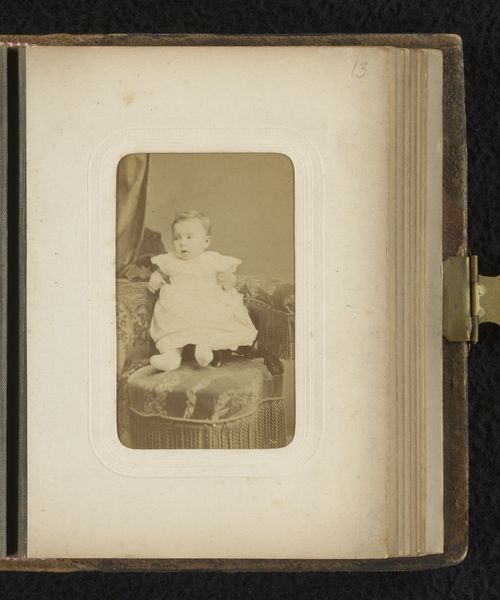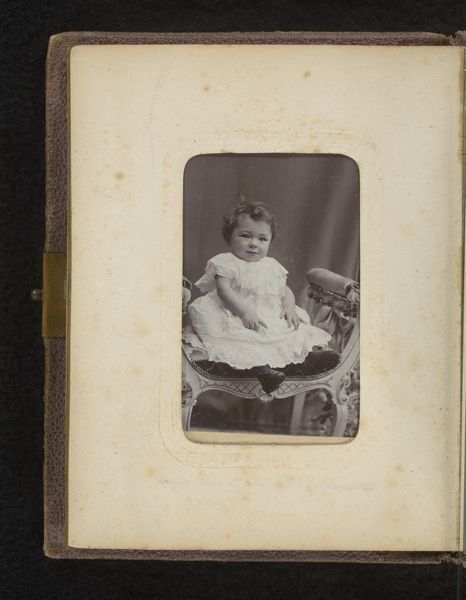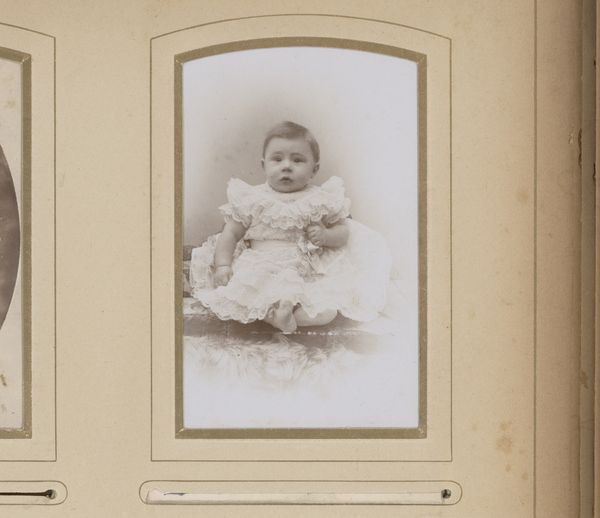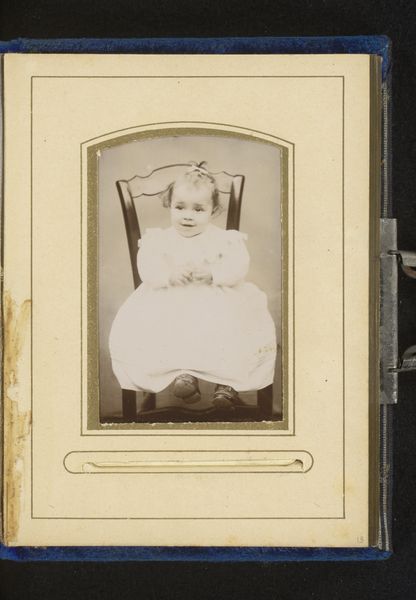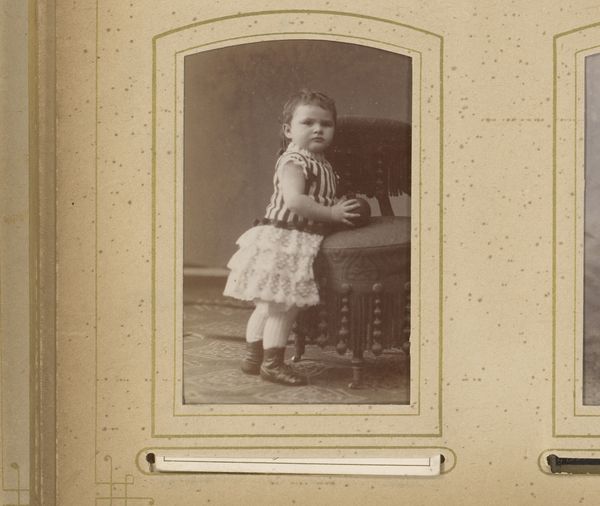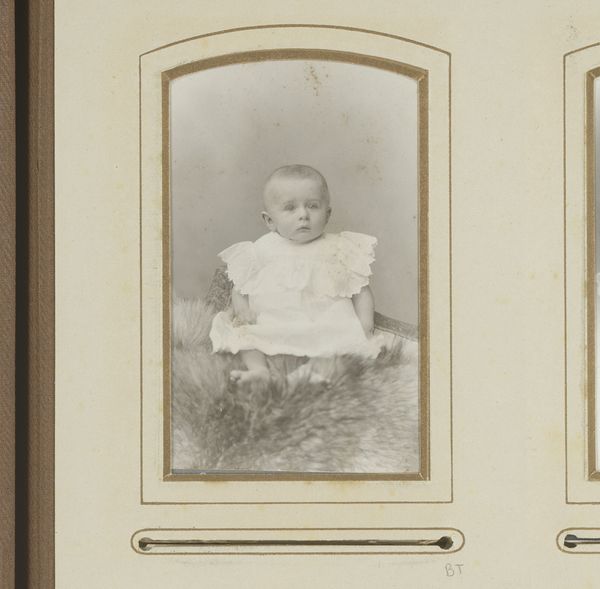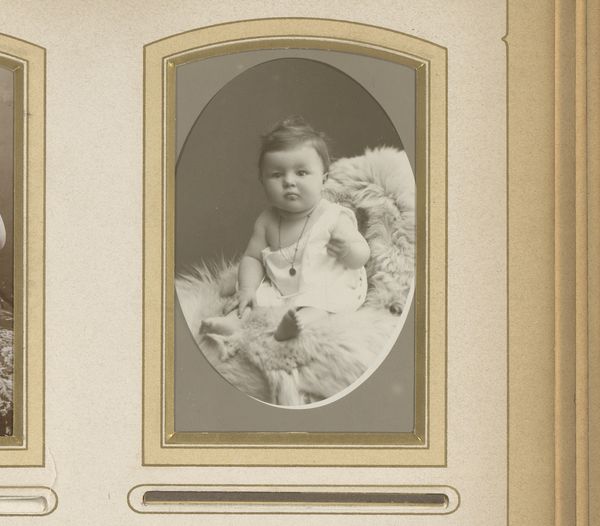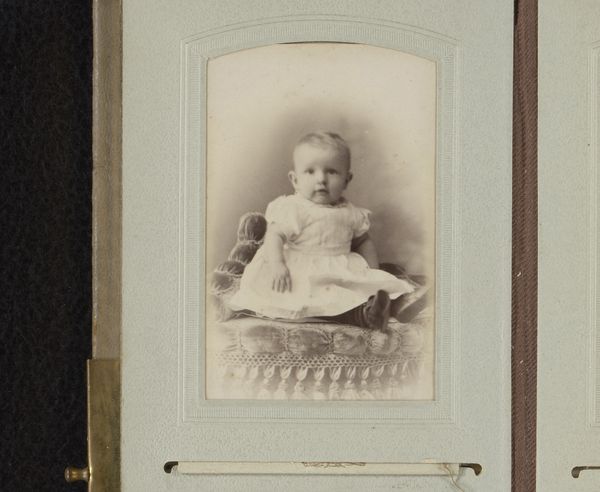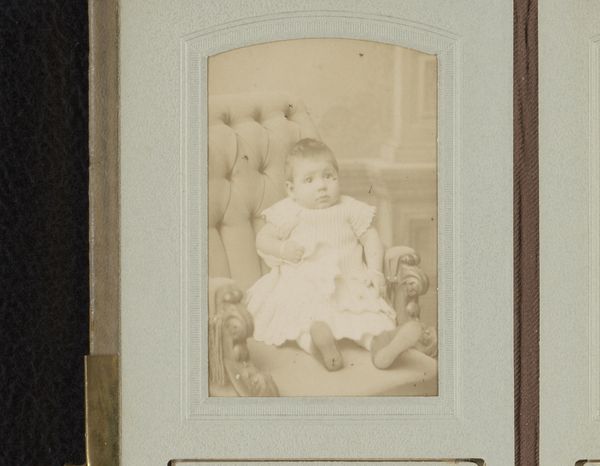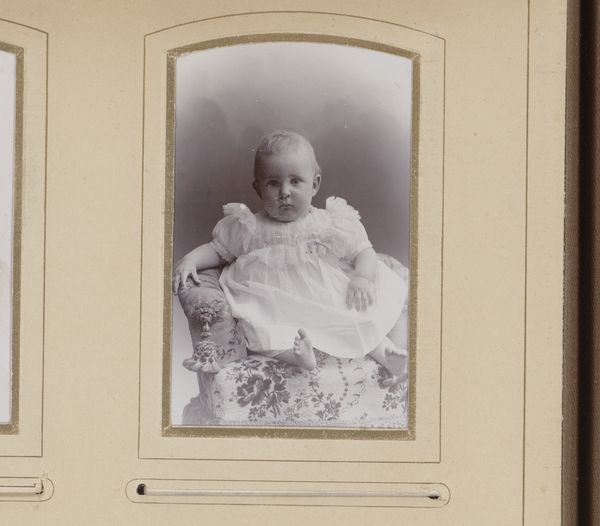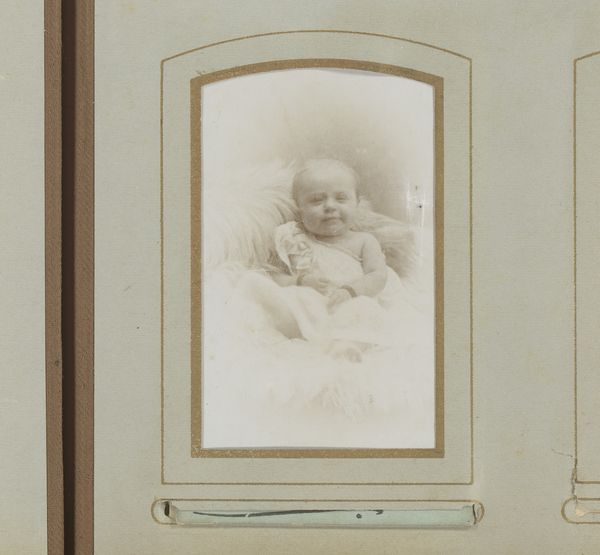
photography, albumen-print
#
portrait
#
photography
#
albumen-print
Dimensions: height 83 mm, width 52 mm
Copyright: Rijks Museum: Open Domain
Editor: Here we have "Portret van een baby" created sometime between 1880 and 1910 by V.d. Berg, using albumen print photography. The photo has this kind of stiff formality to it. How would you interpret it? Curator: This albumen print captures more than just a baby's likeness; it documents the early industrialization of portraiture. Consider the shift in photographic production – from slow, individualized processes to more efficient methods using materials manufactured on a mass scale. The paper, the chemicals, the very act of mass producing these images, democratized access to portraiture, shifting it from a luxury of the elite to something accessible to the burgeoning middle class. It also says a lot about labor conditions at the time, what were the processes for women doing photography at this time? Editor: So, the emphasis on mass production made portraiture more common, interesting. Curator: Exactly. The rise of the middle class demanded affordable ways to create family memory. And the creation of albumen paper and increasingly efficient studio practices fulfilled that demand, though frequently relying on exploited labor. Notice the details - the clothing. Do you know how many women were needed to take care of dressing babies and kids from privileged families in that epoch? What is also crucial, is that as the industry professionalized it allowed women to earn wages, in contrast to working for family. Editor: That gives me a lot to think about about regarding social class and technology! I hadn't considered the industry side of photography from that era. Curator: Indeed. Examining these processes of creation and consumption reveals so much about the society and economy of the late 19th century, it reframes our relationship with photography beyond just recording visual facts.
Comments
No comments
Be the first to comment and join the conversation on the ultimate creative platform.
